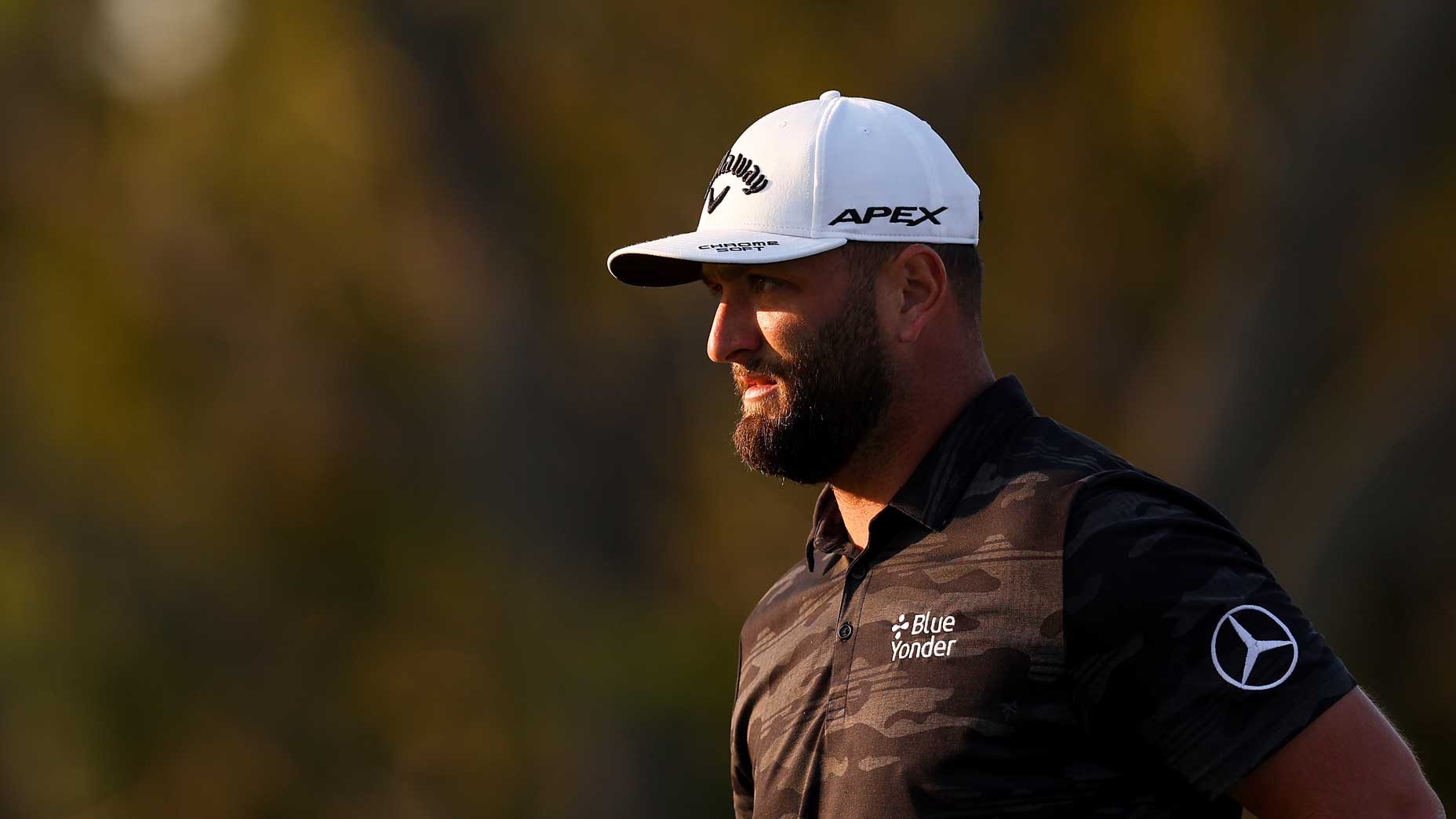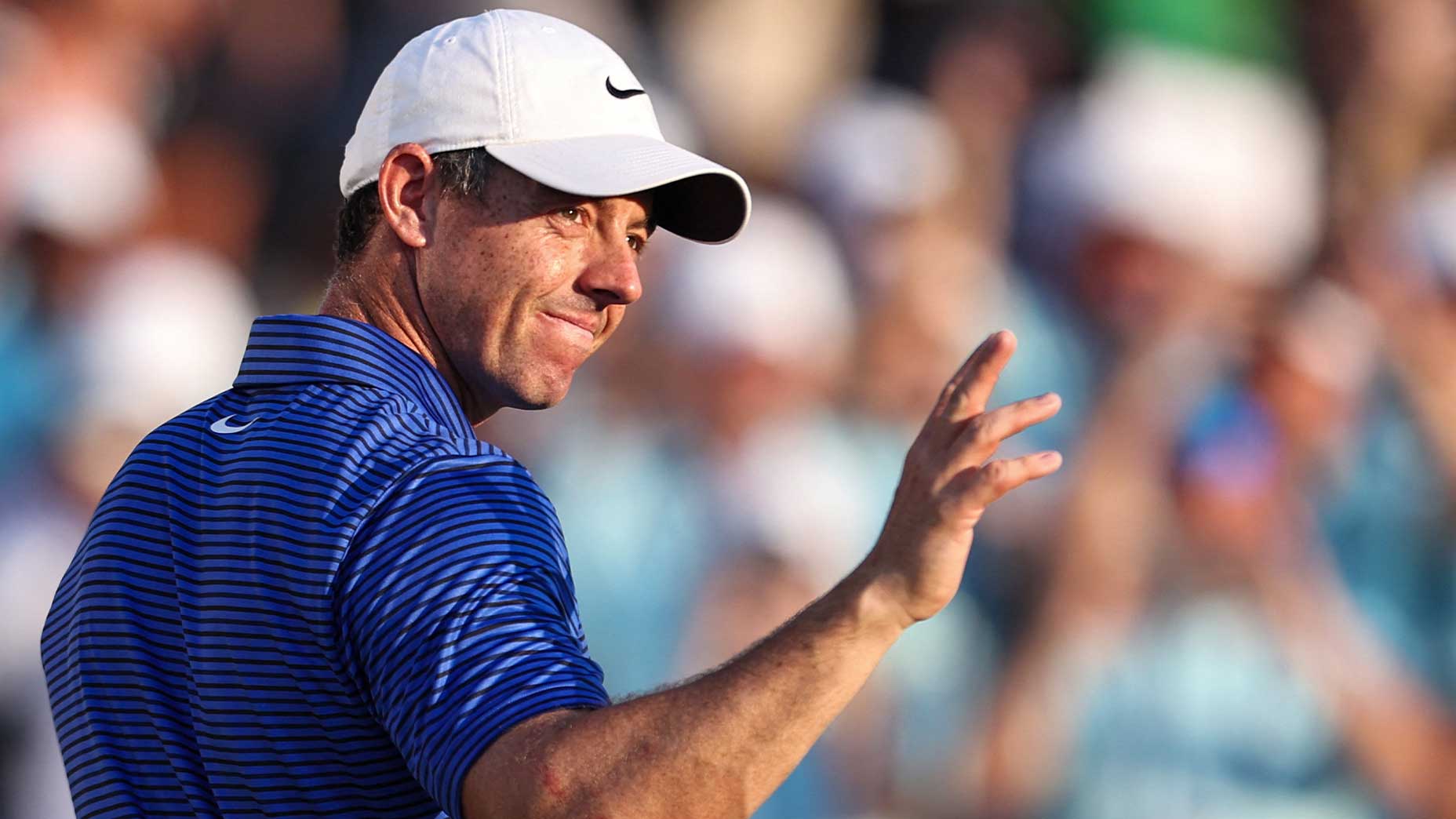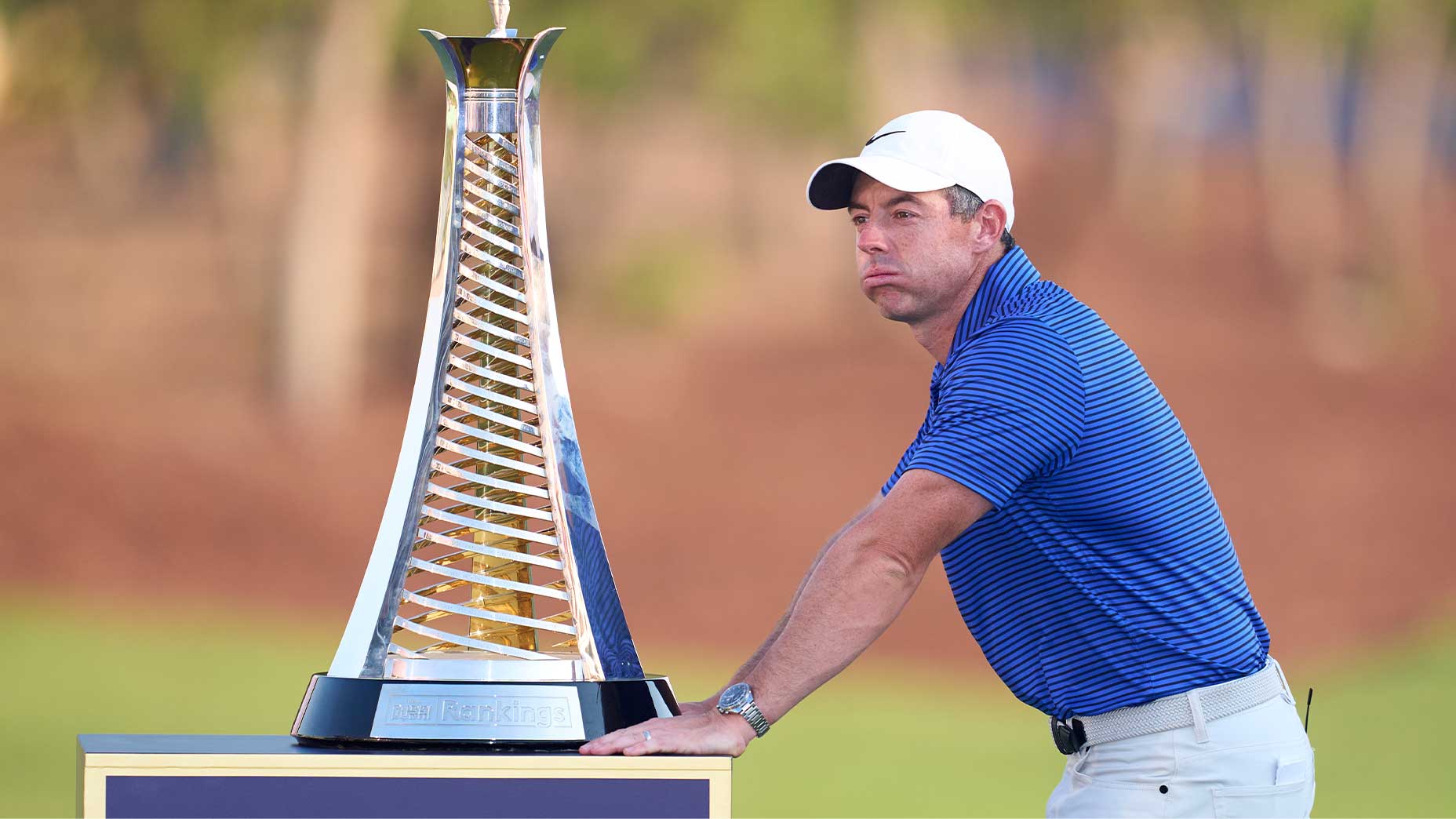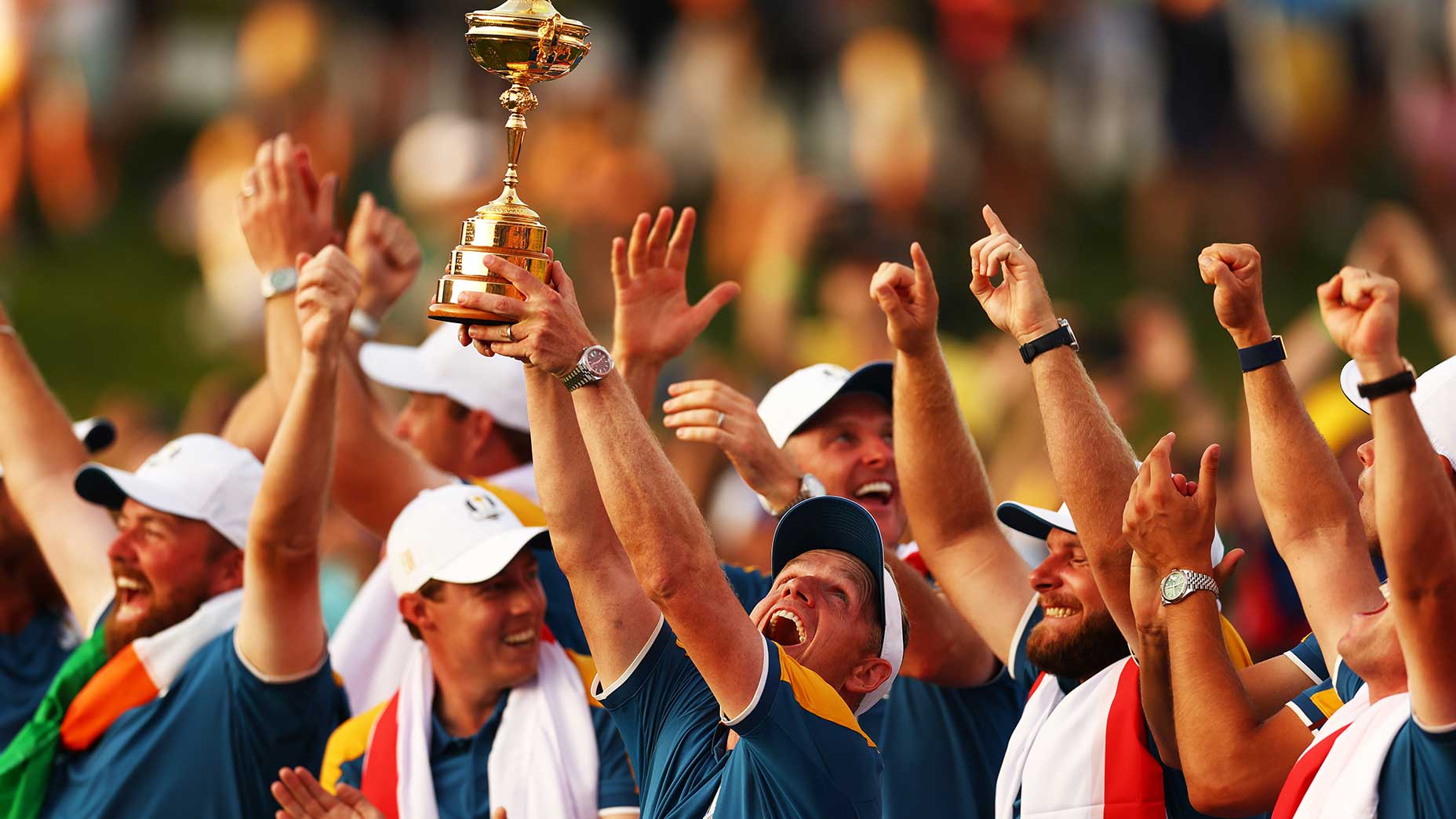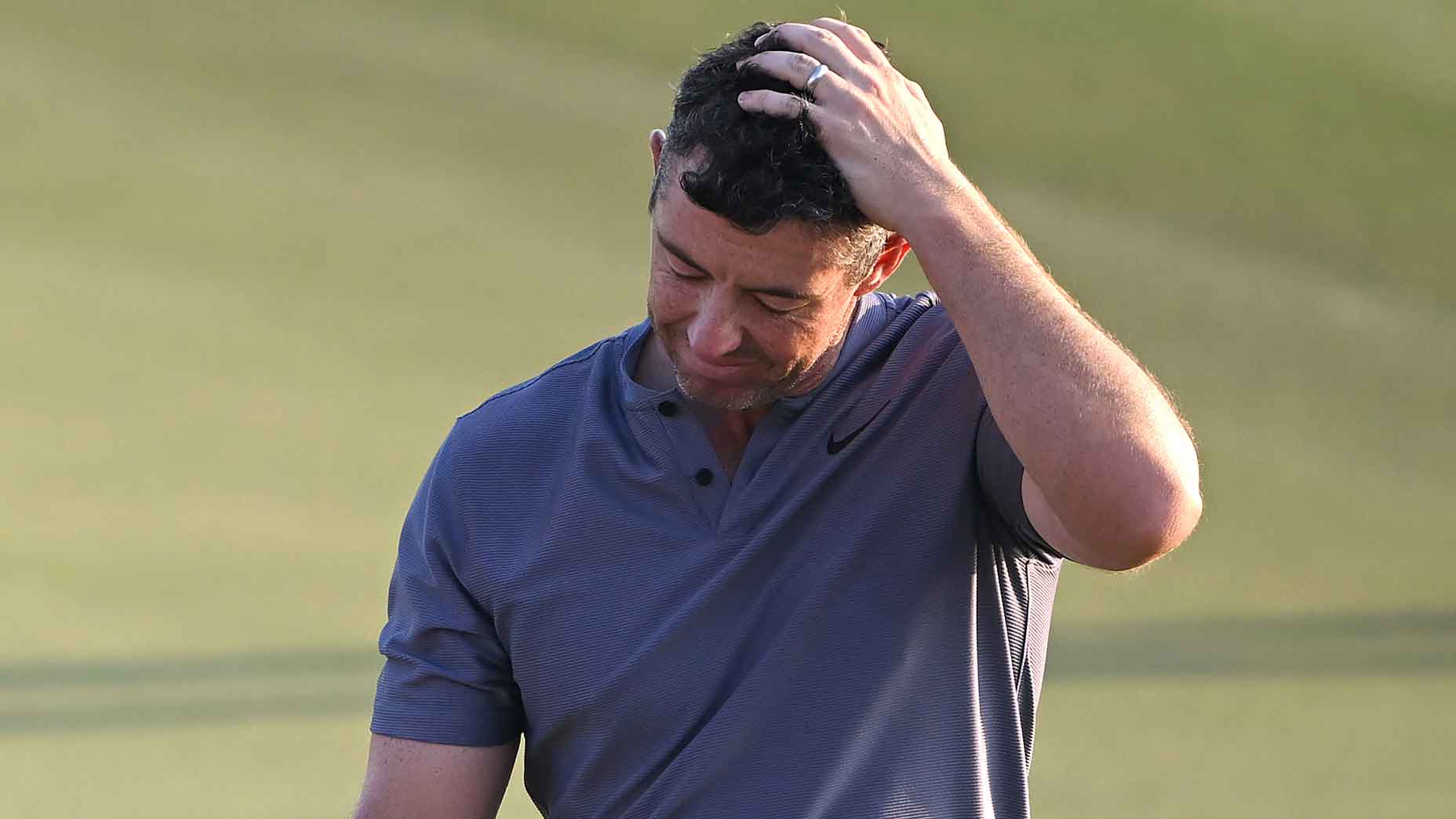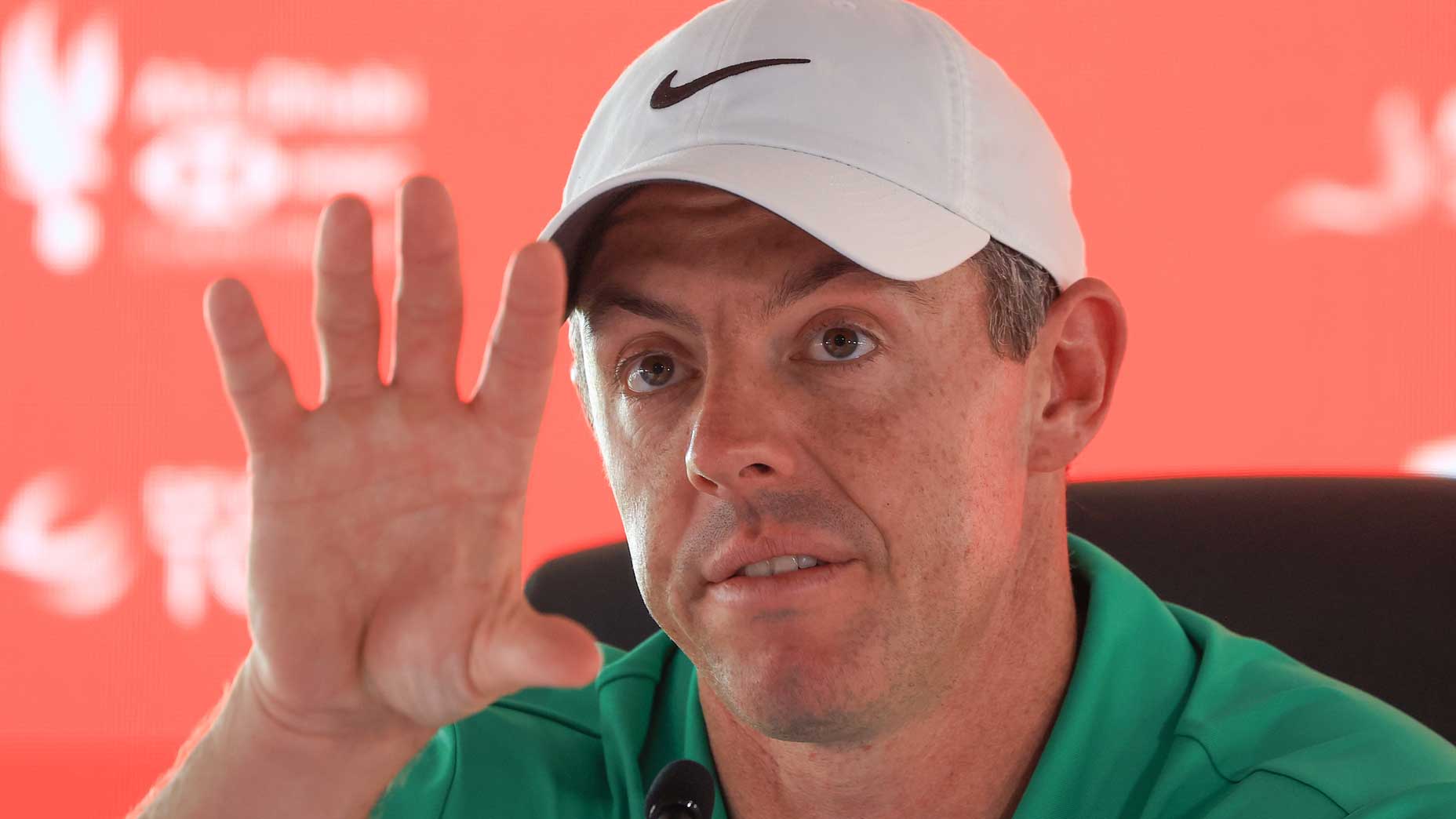Rory McIlroy has an intriguing idea for future PGA Tour events
- Share on Facebook
- Share on Twitter
- Share by Email
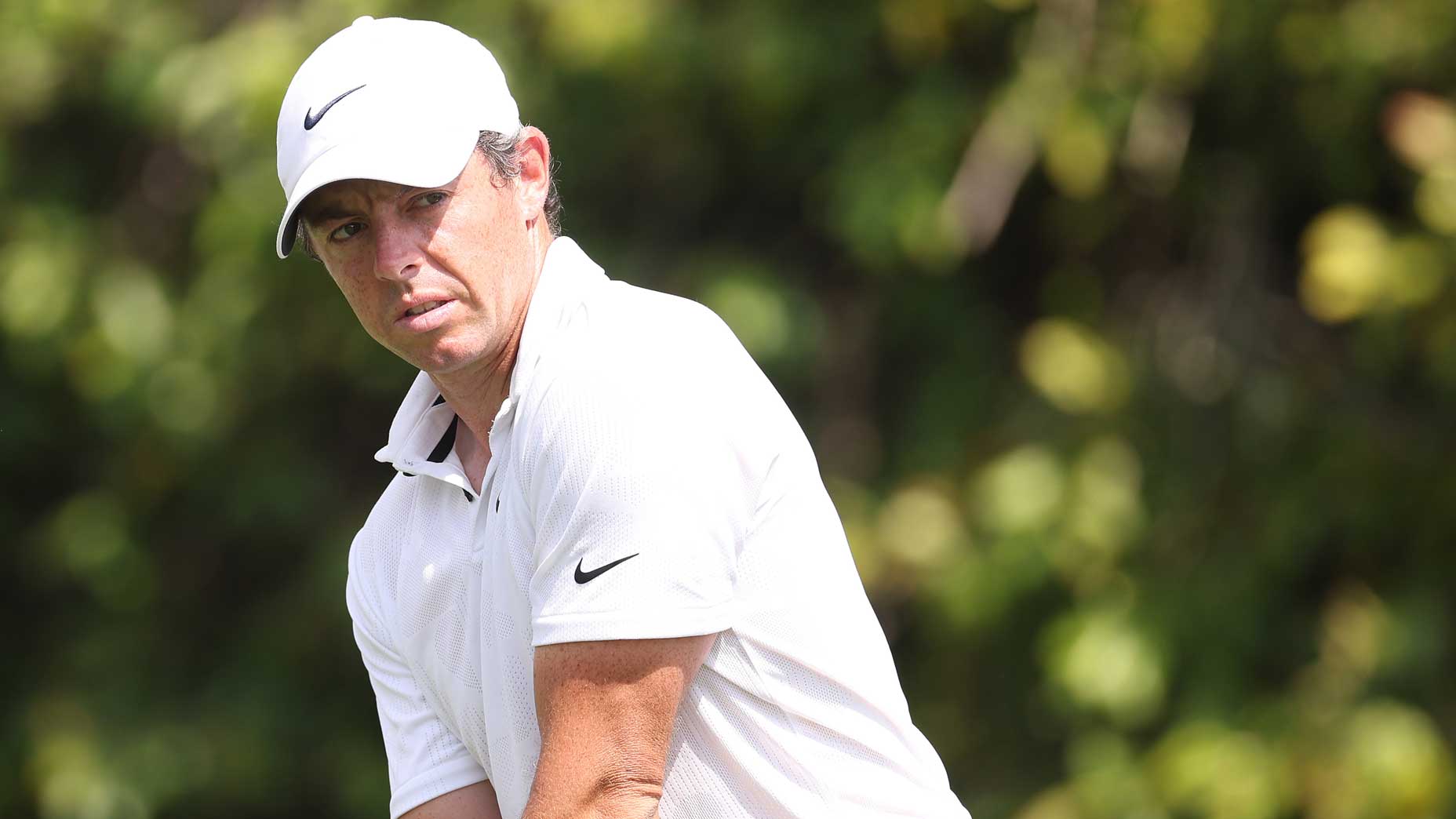
Rory McIlroy shot 3-under 69 on Friday at Bay Hill and then spoke to the media.
Getty Images
Rory McIlroy dreams of the day he can just focus on playing golf.
But that day is unlikely to arrive anytime soon.
The truth is, McIlroy’s too deep in it to fully extract himself. Change arrived to the professional golfing world when LIV burst through the door a year ago. The PGA Tour’s multifaceted response has unfolded in the months since then. And few people have been more involved in that response than McIlroy.
The latest chapter for McIlroy and Co. came earlier this week, when the PGA Tour informed its members of a new structure that will make eight of its “designated events” limited fields with no cuts. The announcement has been met with a mixed, if generally positive, reaction. On one hand, the changes further codify an elite tour within the PGA Tour, but on the other, it ensures the best pros will be playing for the biggest prizes.
“I needed a hard reset at the end of last year. I was exhausted,” McIlroy said on Friday after posting a second-round 69 that left him T20 heading to the weekend at the Arnold Palmer Invitational. There’s no doubt his focus has been divided this week, too, finishing off the behind-the-scenes work that led to this point. He finished last season as the PGA Tour’s FedEx Cup champion but also as its de facto spokesman. That mantle actually seemed to help his golf — it was one of the most consistent stretches of his career — but also led to exhaustion. That was one reason he missed the Sentry Tournament of Champions, the PGA Tour’s season opener in Hawaii.
‘It’s f—– hard’: Jon Rahm comes back to Earth at brutal Bay HillBy: Dylan Dethier
How’s he feeling now?
“I think things should quiet down,” he said optimistically. He cited the changes as an attempt to balance top competition with fairness and accessibility. He also acknowledged his role in the process.
“There’s been a ton of phone calls, a ton of meetings, but now that it’s been decided and announced, hopefully it will quiet down on that front a bit for me,” he said.
That still seems like wishful thinking. He only made it one question further before he was asked how the changes would affect the DP World Tour. While the changes have clear benefits for the top players on the PGA Tour, that upside is less obvious for their “strategic alliance” partners across the pond. McIlroy didn’t disagree with that assessment but leaned instead on the argument that a stronger ecosystem is better for every player in it.
“Look, I think everyone knows [the PGA Tour] is the place that you want to play golf, right? It is. People complain about these 10 cards going to the European Tour players that get on this tour, but if I’m a European Tour player, like, that’s brilliant,” he said.
Beginning this year, the top 10 DP World Tour players will earn PGA Tour cards. Critics argue that relegates the former European Tour to a secondary feeder circuit. McIlroy says that’s already the reality of the situation, and access to the top tour in the world is a significant benefit.
“Instead of trying to think about what’s good for the [DP World Tour], think about what’s good for the players that are on that tour. I think that’s where people need to sort of reframe their mind a little bit.”
He seemed to catch himself before further slighting the DP circuit; McIlroy came of age on the European Tour and keeps membership there, too.
“So to have the opportunity to be in the top 10 in Europe and then get over where all the opportunity is, which is here — I’m not saying there’s no opportunity over there, there is. But the one thing I would like to see going forward with this designated events schedule is trying to get some of those tournaments in the mix overseas.”
If you were wondering where all of this was going, well, so was I. But now we’ve arrived at an interesting proposal. Even if it’s just a thought experiment, well, why not? Let’s go thinking. What events would McIlroy have in mind for these overseas designated events? His Irish Open?
“Irish Open. Spanish Open,” he said. “Scottish Open is obviously a co-sanctioned event now [between the DP World and PGA Tours], which is a big step forward. Wentworth [host of the BMW PGA Championship]. There’s a few obvious ones that stick out that you could try to incorporate into more of a World Tour schedule, more so than it just being purely DP World, purely PGA Tour — and trying to sort of combine the two a little bit.”
It’s worth noting that McIlroy is hardly the first one to suggest a “World Tour” extending beyond the boundaries of North America. Greg Norman’s vision for a worldwide tour led to legal disputes and tour drama in the 1990s and preceded the World Golf Championships, which tried to fill a similar void. While the WGCs appear to be on their last legs, the Tour has since established events in foreign countries like Japan, Canada, Mexico, Bermuda, the Dominican Republic and Minnesota (ba dum tss) as well as a co-sanctioned event in Scotland. Globalism seems to be a focus on the other side of the fence, too. While the majority of LIV’s events are in North America, they’ve made going abroad a priority — including to Norman’s home country of Australia.
It’s possible that McIlroy was just shooting from the hip. But his comments speak to both the challenges and the opportunities that come with a limited number of big-money designated events.
The challenge is that there are a finite number of rotating events and a large number of places that want to host them. Of the 16 designated events on the schedule, 12 seem locked in — the majors (4), the Players (5), the playoffs (8), the Sentry (9) and the invitationals at Riviera, Bay Hill and Memorial (12). That only leaves four remaining events. There will be plenty of pressure to rotate those among favorite Tour stops and favored Tour sponsors. The AT&T Pebble Beach Pro-Am, for example, is expected to get a designated event next year. Every big-time event whose sponsor can afford it will want a seat at the big kids’ table. Four events per year can only make four venues happy. That’s the challenge. Some international events provide some additional challenges, too: TV windows are less traditional, sponsor money is less abundant, tournament infrastructure may not exist. There’s also an additional LIV-related complication: as long as LIV golfers have access to DP World Tour events, as they do now, the PGA Tour is unlikely to give them avenues to play co-sanctioned tournaments. So for now, there are plenty of reasons to think McIlroy’s dream won’t happen.
Critics say new PGA Tour events copy LIV. Are they right?By: Sean Zak
But behind those challenges lurks opportunity. Other than Tiger Woods, Rory McIlroy is the golfer most likely to get something like this done. And because the designated events are scheduled to come in pairs, maybe there’s opportunity there. Perhaps the Scottish Open could receive designated status the week before the Open Championship. Another year a designated Irish Open could be the week after the Open. Is there a way to get the Spanish Open back-to-back with Wentworth? Those would be nods to the strategic alliance with the DP World Tour, and it’s no coincidence that McIlroy mentioned the national opens of the world’s best non-Americans — his Irish Open and Jon Rahm’s Spanish.
There are other exciting options, too, if you dream hard enough. In 2025 perhaps the RBC Canadian Open could get designated status the week before the U.S. Open takes place a couple hundred miles south at Oakmont (and perhaps even sooner than that…). Maybe the Australian Open could follow the Sentry Tournament of Champions another year. (Hawaii’s already most of the way to Australia, right?!) There are ways to serve up major championship-caliber fields and elevate existing tournaments on intriguing courses with storied histories.
If anyone can get it done, it’s McIlroy. Back to the conference room, Rory!
But first, some tournament golf on the weekend.
Latest In News

Dylan Dethier
Golf.com Editor
Dylan Dethier is a senior writer for GOLF Magazine/GOLF.com. The Williamstown, Mass. native joined GOLF in 2017 after two years scuffling on the mini-tours. Dethier is a graduate of Williams College, where he majored in English, and he’s the author of 18 in America, which details the year he spent as an 18-year-old living from his car and playing a round of golf in every state.

